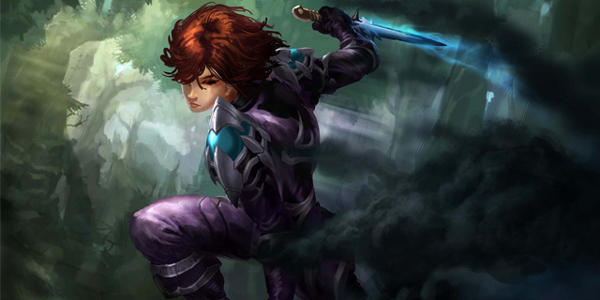
Hearthstone: Heroes of Warcraft's tutorial fails to explain one of the most crucial aspects of the game: creating a good deck. Senior designer Mike Donais wrote a good blog post on the subject today that should help you in the process of picking cards.
Donais' first bit of advice is to focus on a theme. The two most common deck types are "rush" or "control." Rush is an aggressive deck designed to put pressure on an opponent right away and finish them off by the middle of the game. Low-cost minions with Charge and damage-dealing spells are useful for this strategy. Unleash the Hounds, for example, was hugely popular among aggro hunters until the recent nerf.
Control decks, meanwhile, are a slower style of play. You use healing spells and minions with taunt to protect your hero's health and control the board. With a wall of sturdy minions protecting you, you can then steamroll your opponent.
While Donais doesn't say this in his guide, I'd advise that you start with rush decks. They're composed of a lot of low-cost, easily obtainable cards so it's easy to assemble a good deck even when you're a newbie. The best control decks, meanwhile, tend to incorporate one or more Legendary cards. Plus, as Jotto says, fast decks are quick to learn because you can play a lot of matches with them quickly.
Regardless of what type of deck you may, Donais recommends having at least 5-10 cards that cost 1 or 2 mana and then 5-10 cards with high cost. This ensures that you're able to prepared for both early and late game. He also says that you should have at least 20 minions in a starter deck.
"If you play a minion and your opponent can deal with it, then you end up even. However, if you play a minion and your opponent can’t deal with it, then you are ahead on the game board. Once you are ahead on the board you can start making favorable trades or smashing your opponent directly. This makes minions more important than spells which kill minions."
Eventually you might break the 20+ minion rule by creating an exotic, spell-heavy deck like Miracle Rogue. You'll need to acquire some rare cards to make a deck like that work, though. In the meantime, make sure you've got plenty of peons to send into battle.
Your Daily Blend of Entertainment News
Once you've created a deck, play a few matches to test it out. Other players (or even bots) will be better at spotting the flaws in your deck than you will. Make tweaks based on your performance across multiple matches.
"For example, if you lost to a lot of fast-paced decks, add more taunt minions and cards that cost 1–2 mana. Make sure you don't have too many expensive cards. Or, if you run out of cards before killing your opponent, add more late-game minions."
I'd recommend checking out online resources like Hearthpwn and HearthstonePlayers as well. They have dozens and dozens of deck ideas, many of which were used to great effect by fellow players. You probably won't have all the cards listed in these decks. However, once you settle on a playstyle and hero class, these other players' decks will give you a sense of what cards you should be trying to craft.
Check out Donais' blog post for additional advice. The second half of the post talks about some general strategies to follow when playing your deck. It's all solid advice and should help you at least get competent enough to earn the Season 3 card back.
Staff Writer at CinemaBlend.

